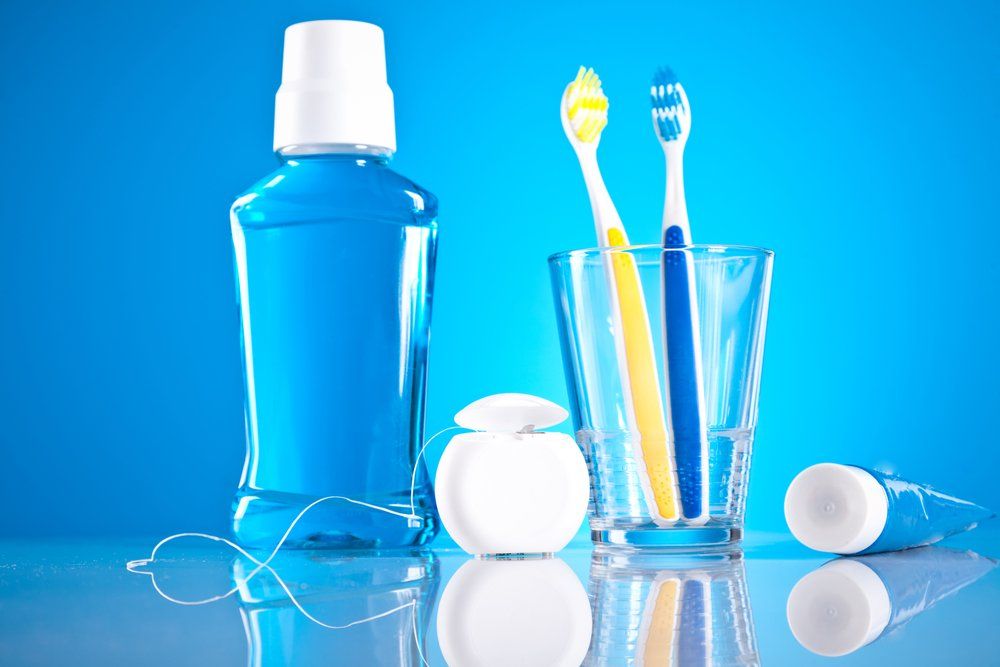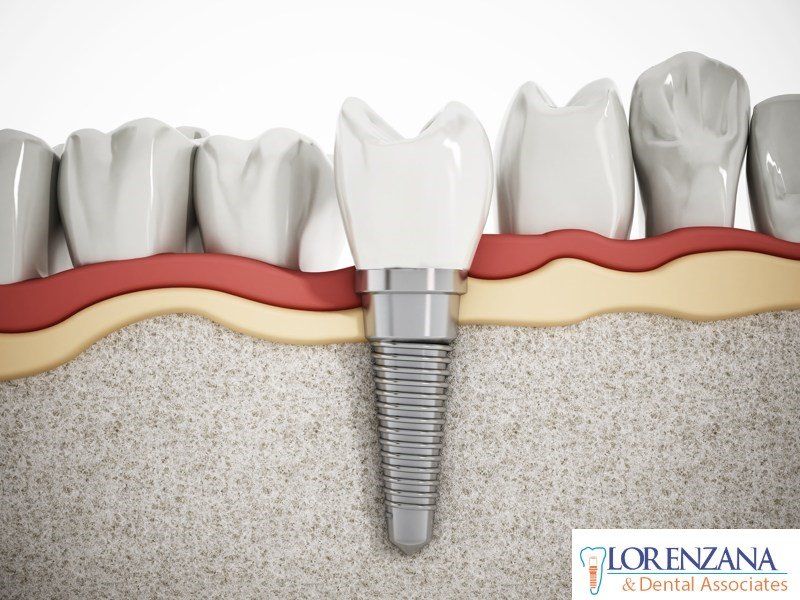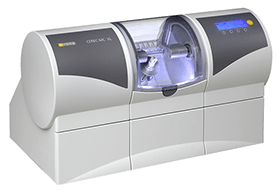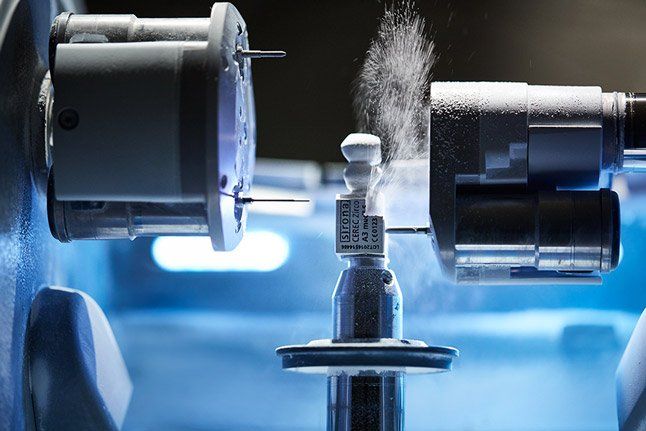TOP 10 Common Dental Problems
Dr. Rafael Lorenzana • September 23, 2014
Dental problems are never any fun, but the good news is that most of them can be easily prevented.
Brushing twice a day, flossing daily, eating properly and regular dental check ups are essential in preventing dental problems. Educating yourself about common dental problems and their causes can also go a long way in prevention.
If you suffer from bad breath, you are not alone. Bad breath, also called halitosis, can be downright embarrassing. According to dental studies, about 85% of people with persistent bad breath have a dental condition that is to blame. Gum disease, cavities, oral cancer, dry mouth and bacteria on the tongue are some of the dental problems that can cause bad breath. Using mouthwash to cover up bad breath when a dental problem is present will only mask the odor and not cure it. If you suffer from chronic bad breath, visit your dentist to rule out any of these problems.
Did you know tooth decay, also known as cavities, is the second most prevalent disease in the United States (the common cold is first). Tooth decay occurs when plague, the sticky substance that forms on teeth, combines with the sugars and / or starches of the food we eat. This combination produces acids that attack tooth enamel. The best way to prevent tooth decay is by brushing twice a day, flossing daily and going to your regular dental check ups. Eating healthy foods and avoiding snacks and drinks that are high in sugar are also ways to prevent decay.
3. Gum (Periodontal) Disease
Studies have shown that periodontal disease, also known as gum disease, is linked to heart attacks and strokes. Gum disease is an infection in the gums surrounding the teeth. Gum disease is also one of the main causes of tooth loss among adults. There are two major stages of gum disease: gingivitis and periodontitis. Regular dental check ups along with brushing at least twice a day and flossing daily play an important role in preventing gum disease.
Oral cancer is a serious and deadly disease that affects millions of people. In fact, the Oral Cancer Foundation estimates that someone in the United States dies every hour of every day from oral cancer. Over 300,000 new cases of oral cancer are diagnosed every year, worldwide. This serious dental disease, which pertains to the mouth, lips or throat, is often highly curable if diagnosed and treated in the early stages.
5. Mouth Sores
There are several different types of mouth sores and they can be pesky and bothersome. Unless a mouth sore lasts more than two weeks, it is usually nothing to worry about and will disappear on its own. Common mouth sores are canker sores, fever blisters, cold sores, ulcers and thrush.
6. Tooth Erosion
Tooth erosion is the loss of tooth structure and is caused by acid attacking the enamel. Tooth erosion signs and symptoms can range from sensitivity to more severe problems such as cracking. Tooth erosion is more common than people might think, but it can also be easily prevented.
7. Tooth Sensitivity
Tooth sensitivity is a common problem that affects millions of people. Basically, tooth sensitivity means experiencing pain or discomfort to your teeth from sweets, cold air, hot drinks, cold drinks or ice cream. Some people with sensitive teeth even experience discomfort from brushing and flossing. The good news is that sensitive teeth can be treated.
8. Toothaches
9. Dental Emergencies
I can't think of much worse than suffering from a toothache. While many toothaches and dental emergencies can be easily avoided just by regular visits to the dentist, we all know that accidents can and do happen. Having a dental emergency can be very painful and scary. Fortunately, you can do several things until you are able to see your dentist.
While an unattractive smile is not technically a "dental problem," it is considered a dental problem by people who are unhappy with their smile and it's also a major reason that many patients seek dental treatment. An unattractive smile can really lower a person's self-esteem. Luckily, with today's technologies and developments, anyone can have a beautiful smile. Whether it's teeth whitening, dental implants, orthodontics or other cosmetic dental work, chances are that your dentist can give you the smile of your dreams.
Source: dentistryabout.com
TOP 10 Los Problemas Dentales más Frecuentes
Los problemas dentales no son ninguna diversión, pero la buena noticia es que la mayoría de ellos se pueden prevenir fácilmente. Cepillarse dos veces al día, usar hilo dental todos los días, comer una dieta balanceada y los chequeos dentales regulares son esenciales en la prevención de problemas dentales.
Educarse a sí mismo acerca de los problemas dentales más comunes y sus causas también se puede recorrer un largo camino en la prevención.
1. Mal aliento
Si usted sufre de mal aliento, usted no está solo. El mal aliento, también llamado halitosis, puede ser francamente vergonzoso. Según estudios dentales, alrededor del 85% de las personas con mal aliento persistente tiene una condición dental que tiene la culpa. Enfermedad de las encías, caries, cáncer oral, boca seca y las bacterias en la lengua son algunos de los problemas dentales que pueden causar mal aliento. El uso de enjuague bucal para encubrir el mal aliento cuando un problema dental está presente sólo enmascarar el olor y no la cura. Si usted sufre de mal aliento crónico, visite a su dentista para descartar cualquiera de estos problemas.
2. Caries dental
¿Sabía usted que la caries dental, también conocida como caries, es la segunda enfermedad más frecuente en los Estados Unidos (el resfriado común es en primer lugar). Las caries se producen cuando la peste, la sustancia pegajosa que se forma en los dientes, se combina con los azúcares y / o almidones de los alimentos que comemos. Esta combinación produce ácidos que atacan el esmalte de los dientes. La mejor manera de prevenir la caries dental es el cepillado dos veces al día, usar hilo dental todos los días e ir a sus chequeos dentales regulares. Comer alimentos saludables y evitar bocadillos y bebidas con alto contenido de azúcar también son formas de prevenir la caries.
3. Enfermedad de las encías (periodontal)
Los estudios han demostrado que la enfermedad periodontal, también conocida como enfermedad de las encías, está vinculado a ataques cardíacos y accidentes cerebrovasculares. Enfermedad de las encías es una infección en las encías que rodean los dientes. Enfermedad de las encías es también una de las principales causas de pérdida de dientes en los adultos. Hay dos grandes etapas de la enfermedad de las encías: gingivitis y periodontitis. Revisión dental periódica junto con el cepillado al menos dos veces al día y usar hilo dental todos los días jugar un papel importante en la prevención de enfermedades de las encías.
4. Cáncer oral
El cáncer oral es una enfermedad grave y mortal que afecta a millones de personas. De hecho, la Fundación de Cáncer Oral estima que alguien en los Estados Unidos muere cada hora de cada día por cáncer oral. Más de 300.000 nuevos casos de cáncer oral se diagnostican cada año, en todo el mundo. Esta enfermedad dental grave, que pertenece a la boca, labios o garganta, a menudo es altamente curable si se diagnostica y se trata en las primeras etapas.
5. Lesiones en la boca
Hay varios tipos diferentes de lesiones en la boca y pueden ser molestos y fastidiosos. A menos que una úlcera bucal persiste por más de dos semanas, por lo general es nada de qué preocuparse y desaparecerá por sí sola. Úlceras bucales comunes son las aftas, herpes labial, herpes labial, úlceras y aftas.
6. Erosión dental
La erosión dental es la pérdida de la estructura del diente y es causada por el ácido ataca el esmalte. Signos y síntomas de la erosión dental pueden ir desde la sensibilidad a los problemas más graves, como el agrietamiento. La erosión dental es más común que la gente podría pensar, sino que también se puede prevenir fácilmente.
7. Sensibilidad dental
La sensibilidad dental es un problema común que afecta a millones de personas. Básicamente, la sensibilidad dental significa experimentar dolor o incomodidad en los dientes de los dulces, el aire frío, bebidas calientes, bebidas frías o helados. Algunas personas con dientes sensibles incluso experimentan molestias de cepillado y uso de hilo dental. La buena noticia es que los dientes sensibles pueden ser tratados.
8. Emergencias dentales y
9.dolor de muelas
No puedo pensar en nada peor que sufre de un dolor de muelas. Mientras que muchos dolores de muelas y emergencias dentales se pueden evitar fácilmente con sólo las visitas regulares al dentista, todos sabemos que los accidentes pueden ocurrir y ocurren. Tener una emergencia dental puede ser muy doloroso y aterrador. Afortunadamente, usted puede hacer varias cosas hasta que pueda ver a su dentista.
10. sonrisa poco atractiva
Mientras que una sonrisa poco atractiva no es técnicamente un “problema dental”, que se considera un problema dental por personas que son infelices con su sonrisa y es también una de las principales razones de que muchos pacientes buscan tratamiento dental. Una sonrisa poco atractiva puede realmente disminuir la autoestima de una persona. Por suerte, con las tecnologías y los acontecimientos de hoy, cualquier persona puede tener una hermosa sonrisa. Ya se trate de blanqueamiento dental, implantes dentales, ortodoncia u otro trabajo dental cosmético, lo más probable es que su dentista le puede dar la sonrisa de sus sueños.
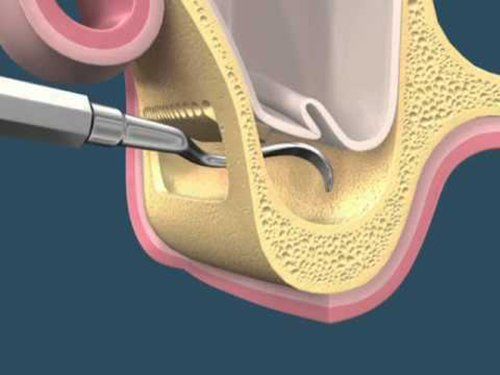
¿Qué Es? El levantamiento de seno maxilar es una cirugía que agrega hueso a tu maxilar superior en el área de tus molares y premolares. El hueso es agregado entre tu maxilar y tus senos maxilares, los cuales se encuentran a cada lado de tu nariz. A modo de hacer espacio para el hueso, la membrana sinusal necesita ser levantada. ¿Para Qué Se Usa? Un levantamiento de seno se realiza cuando no hay suficiente altura en el hueso del maxilar, o cuando los senos están demasiado próximos al maxilar, y los implantes dentales no se pueden colocar por tal motivo. Hay varias posibles razones para que esto suceda: · Muchas personas que han perdido los dientes de su maxilar superior — particularmente los dientes posteriores o molares — no tienen suficiente hueso para que los implantes dentales sean colocados. Una vez se pierde un diente, el hueso en esa área comienza a ser reabsorbido. Si los dientes han estado ausentes por un largo tiempo, con frecuencia no hay suficiente hueso restante para colocar implantes. · Se pudo haber perdido hueso debido a alguna enfermedad periodontal (de las encías). · El seno maxilar puede estar demasiado próximo al maxilar superior. La forma y tamaño del seno varía de persona a persona. El seno también puede agrandarse a medida envejeces. ¿Cómo Se Hace? Tu cirujano hará una incisión y levantará la encía donde tus dientes posteriores solían estar, exponiendo el hueso. Se hace un pequeño agujero ovalado en el hueso. La membrana que reviste el seno en el lado opuesto al agujero separa tu seno de tu maxilar. Esta membrana se empuja suavemente hacia arriba y lejos de tu maxilar. Material de injerto óseo es insertado en el espacio donde el seno solía estar. Una vez el hueso está en su lugar, el tejido es suturado. Lo Que Sigue Después del procedimiento, podrías tener algo de inflamación en el área y podrías sangrar por tu boca o nariz. No te suenes la nariz o estornudes con fuerza. Hacer eso podría causar que el material de injerto óseo se mueva y que los puntos de sutura se aflojen. Puede ser que tu dentista te prescriba medicina para prevenir el congestionamiento y la inflamación. También necesitarás medicina para el dolor, un antibiótico y enjuague bucal antimicrobiano para prevenir una infección. La mayoría de los pacientes solamente experimentarán un poco de incomodidad luego de un procedimiento de levantamiento de seno. Verás al especialista luego de algunos días. Él/ella evaluará el sitio de la cirugía y retirará los puntos de sutura si fuese necesario. Podrías tener que visitar al especialista un par de veces más para que se asegure de que el área está sanando apropiadamente. Tus implantes se colocarán entre cuatro y nueve meses después del levantamiento de seno, dependiendo de la cantidad de hueso requerida. Esto permite que haya tiempo para que el material de injerto óseo se una a tu hueso.
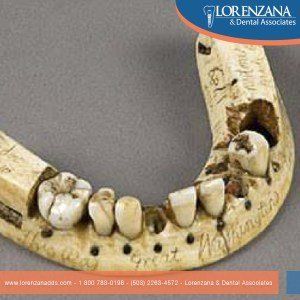
Hoy en día la prótesis dental nos permite reemplazar los dientes perdidos con un aspecto muy estético y natural, devolviendo a la boca la función perdida; pero eso no fue siempre así. Las primeras prótesis dentales de las que tenemos constancia provienen de los etruscos del siglo VIII a. C. y se conserva en el Museo de la Facultad de Odontología de París. Los etruscos utilizaron dientes de animales para reemplazar las piezas faltantes ensambladas sobre bandas de oro, lo cual muestra habilidades muy altas por parte de ellos. Creemos que los fenicios ya usaron oro blando y alambre de oro para la construcción de prótesis dentales. También utilizaron soldaduras y modelos de impresiones. Hacia 754 aC , los etruscos, hábiles artesanos de la época, producían pónticos muy complejos. Empleaban bandas de oro soldadas cada una por pónticos hechos con diferentes piezas dentales de humanos o animales.
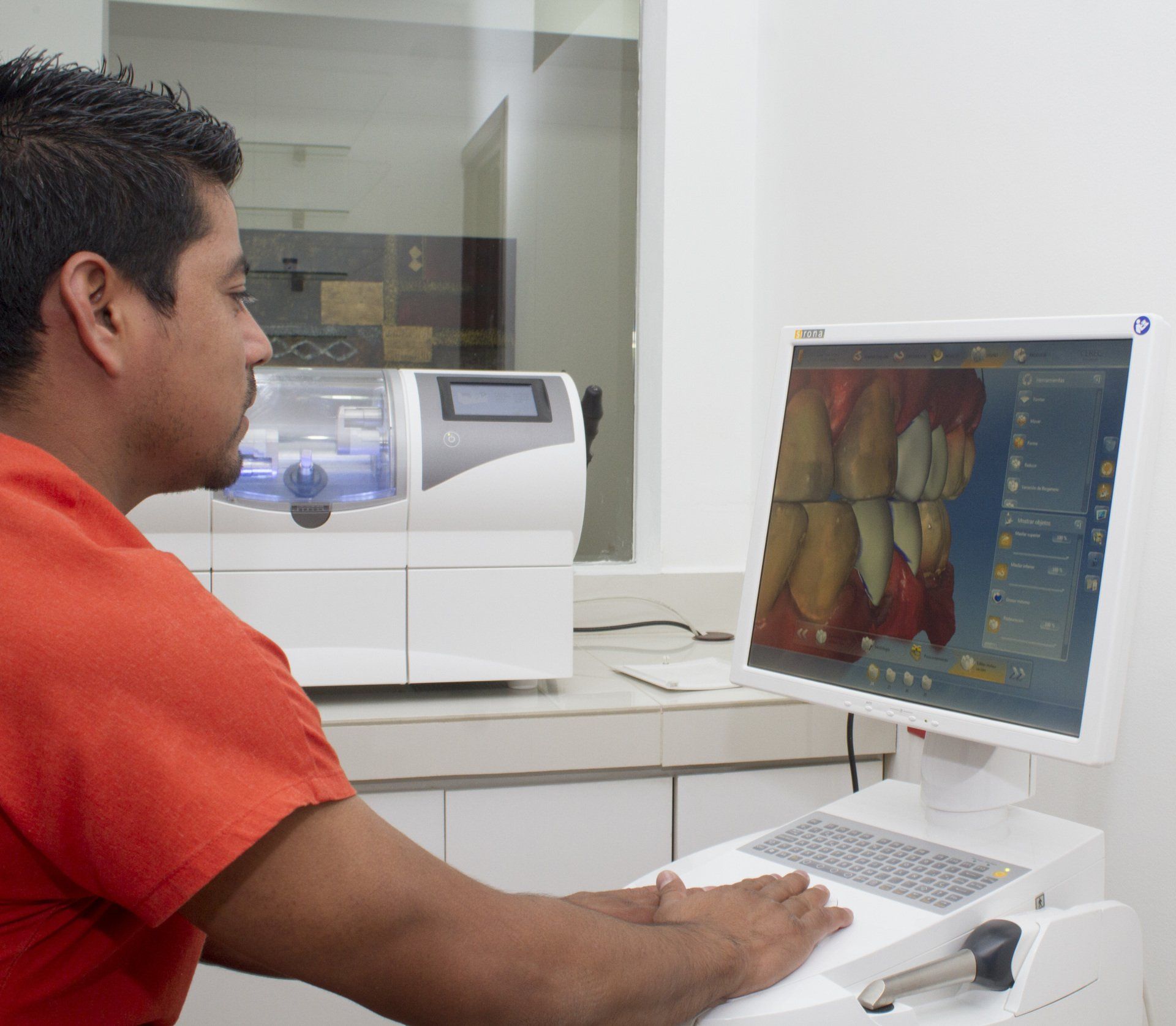
At Lorenzana & Dental Associates, we love our CEREC system - and our patients love it, too! Thanks to CEREC, we can give people the convenience of getting their teeth fixed (e.g. crowns, veneers) in as little as a single visit to our clinic. That is just impressive, right? But how did such an incredible technology as CEREC come into existence? Well, we will talk a little about that in this blog, which is the first in a series of blogs about this system. Let's get to it!
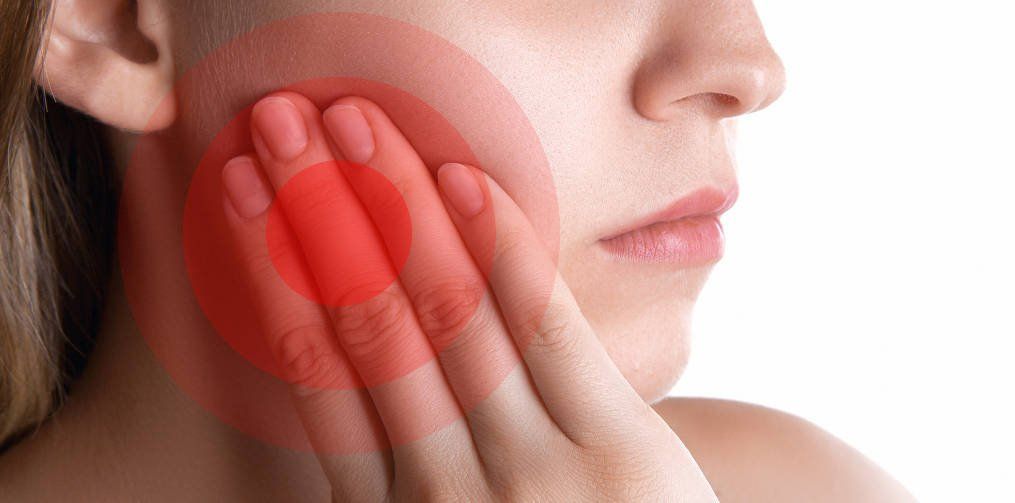
Temporomandibular joint disorders are conditions that cause discomfort and inhibit the proper functioning of the jaw joint and muscles that control jaw movement. Causes In most cases, the cause of TMJ disorders is not evident. However, here is a list of potential causes: External trauma, such as a hard hit to the head or jaw. Tooth grinding or jaw clenching. Poor alignment between top and bottom teeth. Excessive chewing (e.g. gum or fingernails). Overextending the TMJ while eating large things. Degenerative diseases. Symptoms There are various symptoms that could be related to TMJ disorders. Examples of these are the following: Pain in facial, jaw, neck or back muscles. Swelling. Muscle stiffness or limited movement of the jaw. Clicking, popping or grating sounds accompanied by pain when moving the jaw. Teeth not fitting comfortably together. Jaw not opening uniformly or locking. Headache or earache. Difficulty swallowing. Diagnosis There is not always a straightforward way of diagnosing TMJ disorders. Exact causes and symptoms are not clear, and that means the discomfort someone is experimenting could be due to different health issues. Your doctor will take your symptoms and medical history into consideration and then will examine areas of discomfort, including the head, neck, face, and jaw. The doctor might also use x-rays in the analysis of your case. Treatment Reversible Treatments Conservative treatments do not invade the tissues of the face, jaw, or joint, or involve surgery. Reversible treatments do not cause permanent changes in the structure or position of the jaw or teeth. It is advisable that you try these first, before considering more expensive and permanent ones. Muscle and ligament tightness can be helped with jaw stretching and relaxing exercises as advised by your doctor. If the jaw becomes locked, it may be necessary to manipulate the joint back into place under a general anaesthetic. The most common TMJ issues are temporary and do not get worse. Short-term use of pain relievers, such as ibuprofen, may be sufficient. A stabilization splint or a bite guard may provide relief. Stabilization splints should only be used for a short time and should not cause permanent changes in bite. Permanent Treatments There is often debate around the use of permanent methods to treat TMJ disorders. There are no long term studies that show the efficacy of these methods, plus they are extensive and often more expensive than reversible treatments. The bite may be adjusted by polishing teeth, using reconstructive dentistry, or fitting braces. A repositioning splint may be fitted, which over time will permanently change the position of the jaw, ligaments and muscles. There may be an effect on teeth alignment, so more dental work may be needed to adjust the teeth. There is even the option to replace the jaw joint with artificial implants, but it should be considered a last resort. Self-Care In many cases, self-care measures can help alleviate the symptoms of TMJ disorders: Eating soft foods. Applying cold or warm compresses. Avoiding excessive jaw movements (shouting, gum-chewing, and wide yawning, for instance). Practicing gentle jaw stretching and relaxing exercises. Resting the jaw as much as possible. SOURCES: National Institute of Dental and Craniofacial Research Health Navigator



